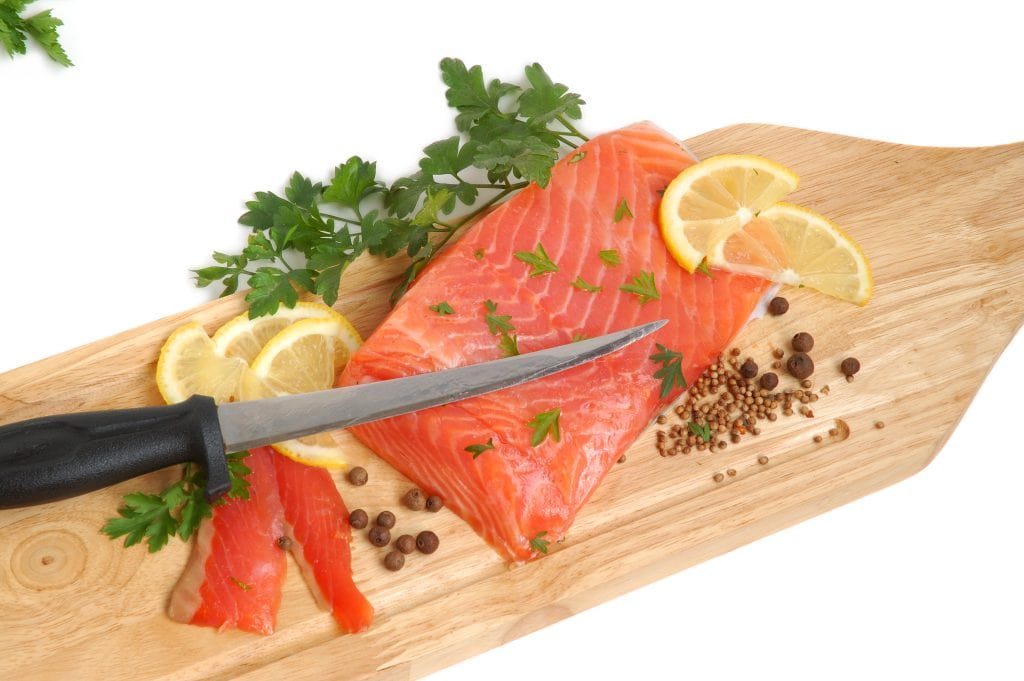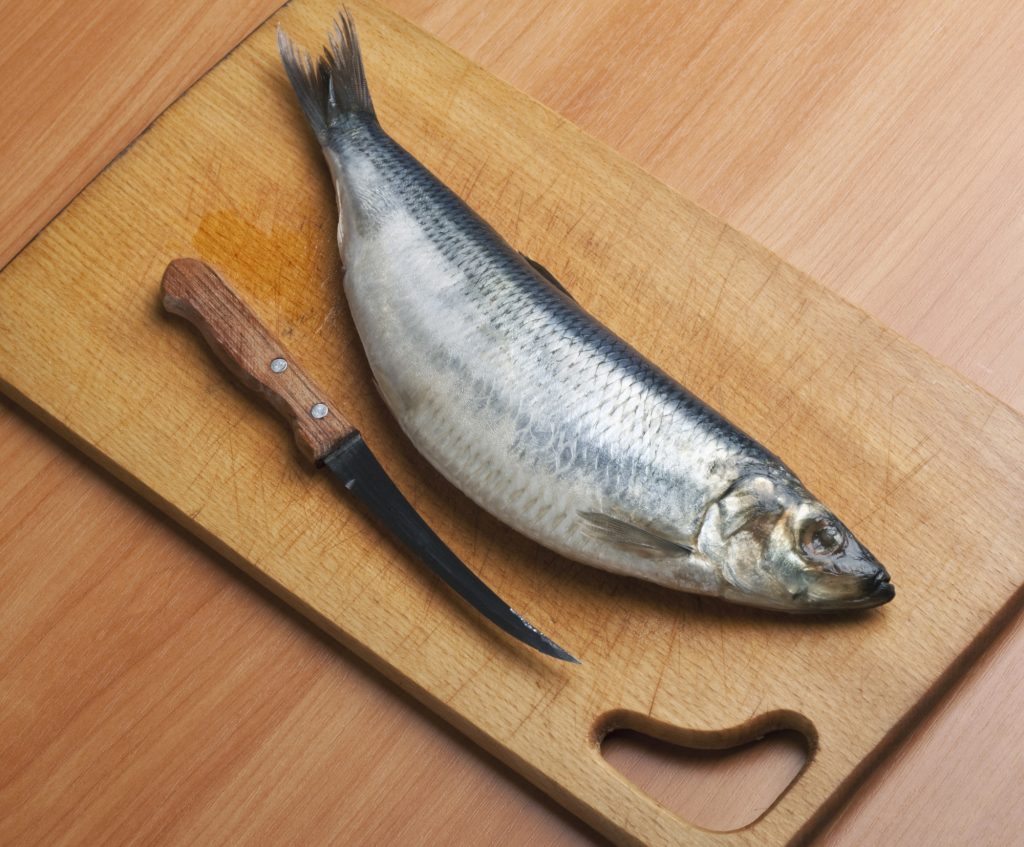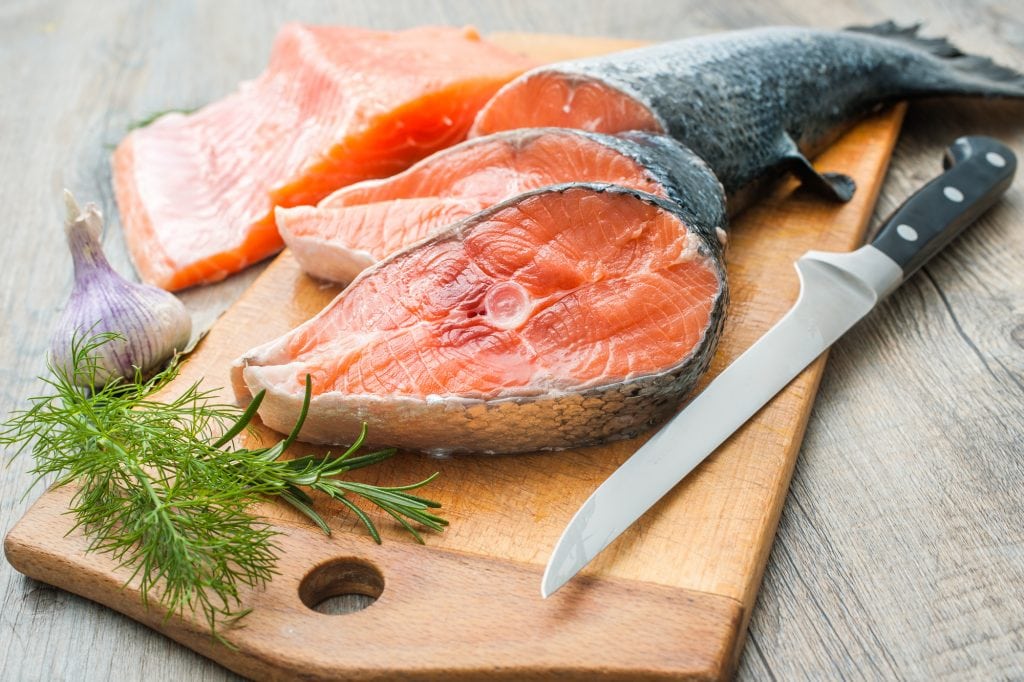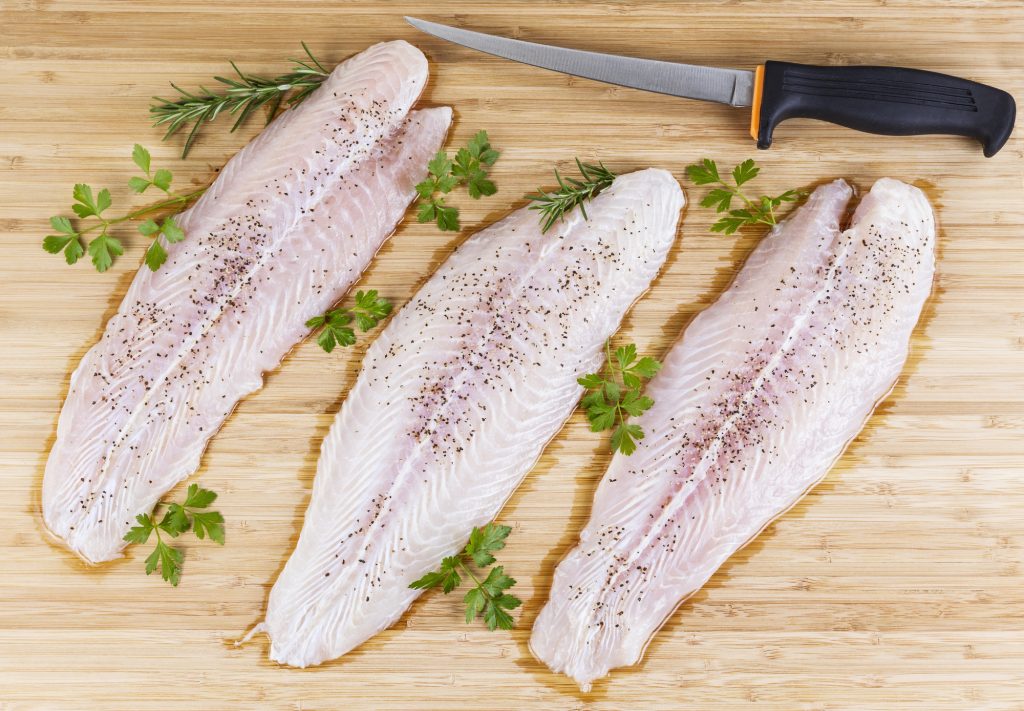Anyone that has ever tried to perfectly cut freshly caught fish knows you need a sharp blade. Being able to maneuver between the intricate bones and structure of the fish while still getting those delicious shapes and fillets people love to eat is a challenge. That is why having the best possible fillet knife with the right balance of pliable flexibility and lightweight design is so important. We’ve already listed our suggestions for the List of the Best Fillet Knives, but we thought we would go a bit deeper and offer a more in-depth buying guide to help with your decision-making.
How to Choose the Best Fillet Knife for You?
There are a lot of options on the market for fillet knives and it can be overwhelming if you do not have experience working with fish. The goal of this buying guide is to give you subtle insights into what types of fillet knives will bring you the best results for your next dinner party. Most of these suggestions on what characteristics to look for come from professional chefs who work with fish all the time.
What is a fillet knife?
A quality fillet knife is designed to cut pieces of fish around their scales and bones. They are designed to be incredibly sharp, so little effort is required to navigate between the tiny bones of any fish. This way, your guests do not try to swallow anything other than the fish.
What does a fillet knife look like?
A fillet knife will be thinner and more flexible than most of the other knives you have held before. There tends to be an upward curve along the blade with an incredibly sharp tip to get in-between tiny fish bones. Even though a fillet knife is a type of boning blade, there are subtle differences between a fillet knife vs. boning knife. Most importantly, a fillet knife is not meant for excessive force. It is a more delicate blade meant for agility and precision.
What is a fillet knife used for?
In the end, every “best” knife for you is going to depend on your personal preface. However, the main reason to own a fillet knife is to safely remove tiny bones and scales from fish. It also allows you to make those perfect fillet cuts that look incredible on menu photos. You get a lot of control for the intricate work because the blade is so sharp.
Fillet knives are also often used for:
- Filleting fish and other seafood
- Removing the scales from a fish’s body
- Cutting up intricate pieces of fruit
- Finely mincing onions, garlic, or shallots
- Preparing attractive designs and arrangements of fruits and vegetables
- Carefully remove sinew, muscle, fat, and skin from meat.
Fillet knives are not meant for:
- Heavy cuts requiring a lot of force
- Frequent chopping
- Cutting through bone
Let’s go over some of the different properties of a fillet knife to consider when making your next purchase.

Price – How Much Does A Fillet Knife Cost?
Fillet knives range in price from about $28-$158. The broad range is because of materials, brand, durability, and sharpness. It also matters if you purchase a kitchen fillet knife or a field fillet knife. Many fishermen keep fillet knives in their gear. Those blades have to be made of sturdier materials to handle the environmental factors of being out in the woods.
Are fillet knives worth it?
Absolutely. Fillet knives are what prevent you and your guests from choking on those tiny annoying bones all fish have inside of their bodies. They also provide the sharpness needed to remove unwanted fat or grizzle from certain other meats that many people do not wish to eat.
Dimensions – The Length & Weight of a Fillet Knife
This is another highly debatable factor because it depends on whether you are in the field or in your kitchen. People filleting fish in the great outdoors prefer a thicker handle and more weight, while those in kitchens like more agility and precision. In both cases, sharpness matters a great deal. The total weight and length (tip to end of hilt) matter because they determine the dexterity you get while cutting.
The length of a fillet knife
The total length is measured for the entire knife, not just the blade. There are so many varieties of lengths on the market because there are so many different types of fish. A smaller 6-inch blade may be perfect for pan-fried fish, while a 7.5-inch blade is better for making sushi. It will vary based on the type of fish you fillet the most.
What Is the best length for a fillet knife?
If you are looking for an all-around fillet knife, go for the 7.5-inch blade. This will give the most versatility to deal with large and small fish pretty well while still providing optimum efficiency and ease of use for precision cuts.
The weight of a fillet knife
Most well-made fillet knives are measured in oz and have a range of 2.5-6.8oz. The heavier fillet knives are used in the field, and the lighter are used in kitchens. You do not want something so light that you cannot feel the weight of the blade as you cut. You also do not want something so heavy that it is impossible to get the dexterity needed for precise movements or cuts.
What is a good weight for a fillet knife?
The best weight we have found in a quality fillet knife tends to be between 4.2-4.6oz. This puts you right in the middle range, where you have enough weight to let the blade’s sharpness do the cutting and enough dexterity for getting around bones.
The Fillet Knife’s Blade

The long curved shape of the fillet knife blade is well known in the industry. It has a thin overall construction with a slightly rounded tip point and an incredibly sharp edge. There are specific characteristics and details you should watch out for when selecting your fillet knife.
What is the difference between forged and stamped blades for a fillet knife?
A forged blade is made from a single piece of metal that has been melted down and then put into a mold as it is created (forged). A stamped blade is made by cutting out (stamping) a larger piece of metal. You will see more stamped blades made by machine manufacturing using pre-molded cutters and more forged blades made by hand. In general, a forged knife will be of better quality, but there are many combinations that are worth looking into for your purchase.
Blade material – What material should the fillet knife blade be made of?
The goal is to find the right balance of durability and flexibility as you cut. You do not want your blade to break or get dull too quickly. You also want to have a material that you can rely upon to do the work for you, so you do not have to use too much force as you cut.
- Carbon – this is a blend of carbon and iron. It is not the best for fillet knives because they can rust quickly. However, it is easier to sharpen than other materials.
- Stainless steel – much better against water because it will not rust as easily, but it is also harder to keep sharp.
- Laminated or Damascus steel – combines two or more alloys and usually has beautiful wavy lines, creating a blade that tends to be harder than other materials.
- Ceramic – made from zirconium oxide, these blades are extremely hard and sharp with almost deceptive lightness. This is an excellent material for a fillet blade, but it will cost you quite a bit more than average.
- Titanium – offers much of the same sharpness as medium steel. This material frequently used by divers holds up well in salt and fresh water.
It all comes down to rust. Fillet knives are primarily used for cutting, scaling, and deboning fish, which means a lot of contact with liquids and water. You want a knife that can maintain its sharpness while also being rust-resistant. Either use a stainless steel blade or one with a titanium coating to protect it from rust.
Blade flexibility – Should a fillet knife have a flexible blade?
Yes! You want a blade with some give because you have to get around bones and scales. That work requires a lot of flexibility for precision cutting. This is also why most fillet knives are thin and have an incredibly sharp edge to get around the bone and cut with dexterity.
Blade Width/Thickness – How thick should a fillet knife blade be?
The thinner the blade, the better cut you can get. Too thin, and you risk not knowing where the blade is as you cut. You also do not want a material that has been used to create such a thin blade that it breaks easily. Stick to around 2.5-3.5mm at the spine of the blade. This gives you enough material to sharpen while also maintaining its flexibility.
Tang
The tang means how long the piece of metal of the blade is and whether or not it extends into the knife’s hilt. Full tang usually involves a single, long piece of metal with two pieces of the handle bolted around the blade. This is the best option because it speaks to the quality of the construction and durability of the knife. Half tang is when the metal stops at the hilt or is only partially in. These can be good but do increase the risk of breaking.
HRC
The Rockwell hardness scale (HRC) determines the extent of hardness in the knife’s blade. This scale rates the metal or other material used to construct the blade. You are looking for an HRC rating in the medium hardness range, so something in the high 50s. This way, you get that desirable balance of thinness and flexibility.
Edge profile – What edge should a fillet knife have?
The sharpness of a fillet knife is everything to the blade. This is a precision tool that requires cutting with very little effort or force by your hand. That means you want to find an edge profile that supports that kind of activity. We tend to prefer Single Bevel fillet knives.

Double Bevel
When the blade has two angles built into the construction. This V shape you see in most European blades is often used for cleavers or other heavy cutting.
Single Bevel
Only one side of the edge is angled, creating a chiseled edge like what a Japanese word would have. This incredibly sharp edge is excellent for fillet knives but does require a bit of maintenance to keep the blade sharp over time.
Convex Edge
This type of edge is slightly rounded and tapers off to a fine point for the actual cutting sharpness. This is a balanced blade with easy to sharpen edging and decent blade material.
The Fillet Knife’s Handle
Always go for the handle that is going to be easiest for you to maintain a grip on. Fillet knives are sharp, and it takes little effort to slice into your own fingers if you are not careful. Look for hilts that are longer than your fist and allow you to grip in different ways without risking slippage. We always seek out ergonomic designs made with metal or plastic combinations that have grip reinforcement. Do not pick out wood. You are using this blade on fish and do not want bacteria to build up in the hilt.
Balance
The balance of a blade is essential concerning the work you are performing. For example, a meat cleaver needs a heavier blade where the balance point is beyond the hilt. A fillet knife requires agility and precision, which means an even balance. You should be able to hold the knife on your finger at the top of the hilt with it balanced evenly. If there is a slight dip towards the hilt, that works too because you want a lighter blade.
Maintenance and Care – How to Maintain a Fillet Knife?

Fillet knives are constantly interacting with seafood. That means a lot of water and internal organs that can leave behind bacteria or rust the blade. If you are not careful, your fillet knife will begin to deteriorate or get dull, and that kind of defeats the purpose of even owning the blade. Proper maintenance is required to ensure excellent cutting.
How to clean a fillet knife?
This is going to depend on the material of the blade and hilt. You would not want to put steel into a dishwasher. Most fillet knives are made from a combination of steel and reinforced coatings. That is why we stick to hand washing all our fillet knives in a mild soap with warm to hot water. Be careful – these are sharp blades.
Are fillet knives dishwashers safe?
Yes, there are certain materials that are technically safe to use in a dishwasher, but we do not recommend it. For one, you are exposing a thin blade to extremely hot temperatures for a long period, which can harm the blade. For the other, this is a sharp instrument that you do not want to reach into a dishwasher and accidentally meet with your hand.
Learn how to remove rust from a knife blade and how to protect your kitchen knife from rusting.
Honing & sharpening your boning knife – How to keep your fillet knife sharp?
Most quality fillet knives come with a sheath. The reason for this is that the sharpness of the blade matters. Sharpening the blade often removes metal from the material and makes an incredibly thin blade even thinner. Honing reshapes the metal that is already there and maintains the overall construction of the blade. That is why we use sharpening steel in the vertical position to reform edges. This blade is the one you will hone the most compared to the rest in your arsenal.
Read now >> Why does a sharp knife safer than a dull knife?
How to store a boning knife?
We cannot emphasize this enough – keep your fillet knife dry! Always make sure it is properly dried off before placing back into its sheath. If you do not have a sheath, use a wooden block. This is not a blade you want on a magnetic strip unless you are a professional. One accidental reach or slip, and you can slice a finger.
Conclusion
Fillet knives are the best tool for getting the perfect cut of fish. They are extremely close to what sushi chefs use for those delicate pieces of fish and immaculate presentation. If you enjoy seafood at all, you need a quality fillet knife in your kitchen. Just make sure it has the rust-resistant material and flexibility you need. A quick purchase of a fillet knife could be the best way to impress your guests the next time you are serving fish on the menu.

Post Your Thoughts